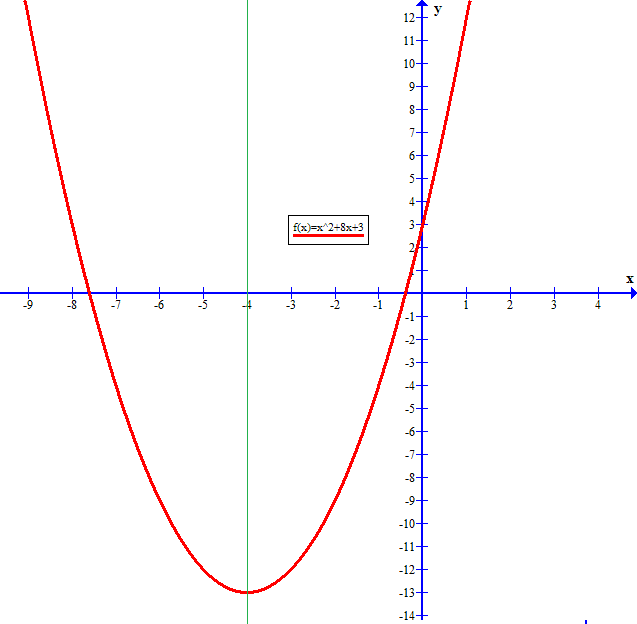How do you find the y intercept, axis of symmetry and the vertex to graph the function #f(x)=x^2+8x+3#?
1 Answer
vertex:
axis of symmetry:
Explanation:
Assuming
y-intercept
the
If
when
then
vertex
The easiest way (in my opinion) to find the vertex is to convert the equation into "vertex form".
The generat vertex form for a parabola is
with vertex at
which implies:
Given
it is clear that
So we want to find
(the following method is called "completing the square")
From the above we have:
which implies
therefore becomes
which implies
or
Therefore the vertex form is
with vertex at
axis of symmetry
For a standard parabola (such as this one with
In this case that vertical line is
For verification purposes, here is a graph of the given function:

